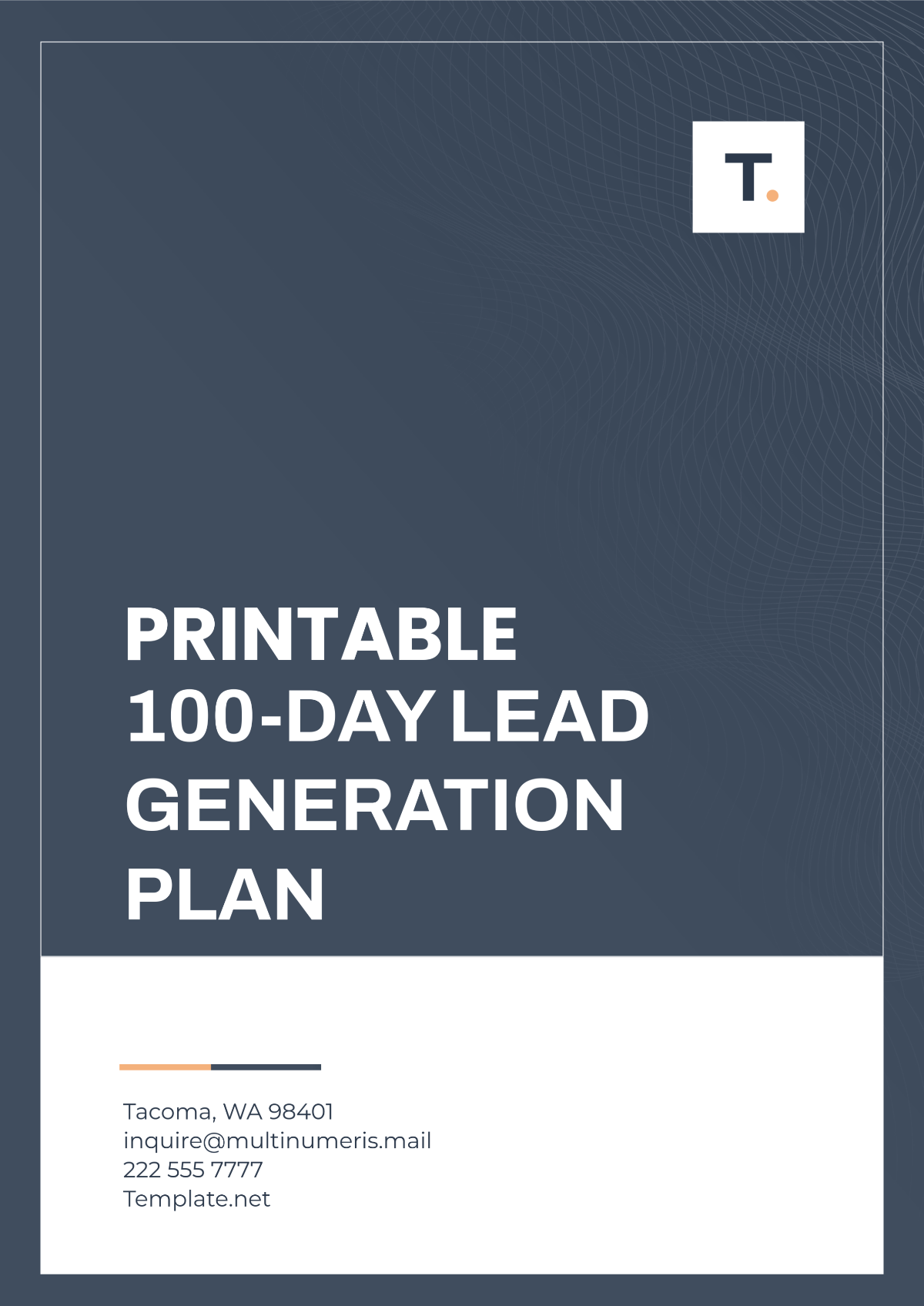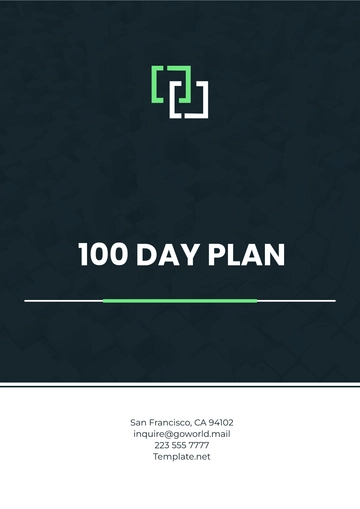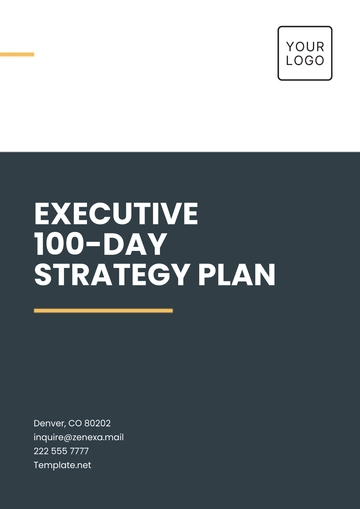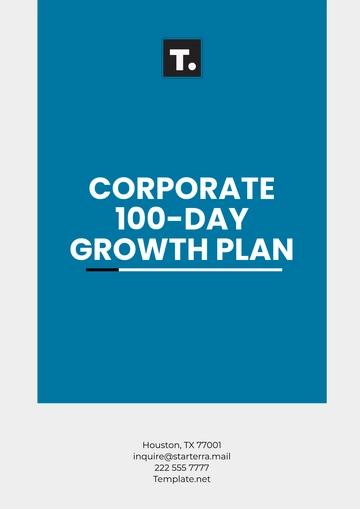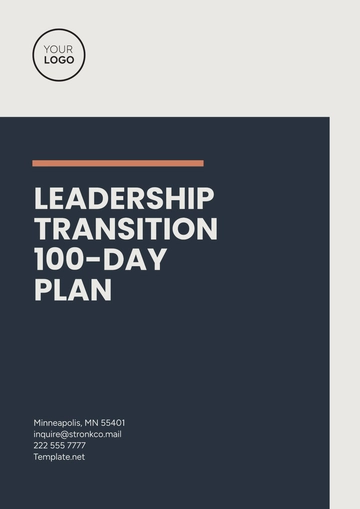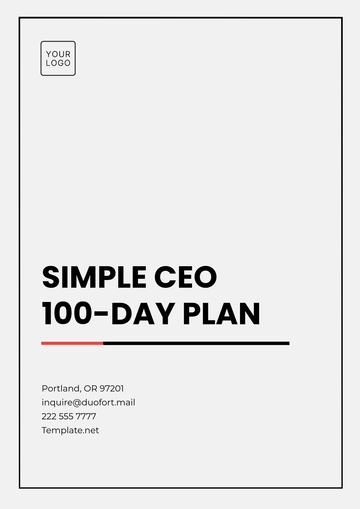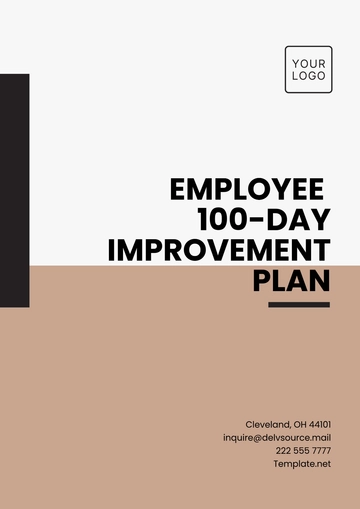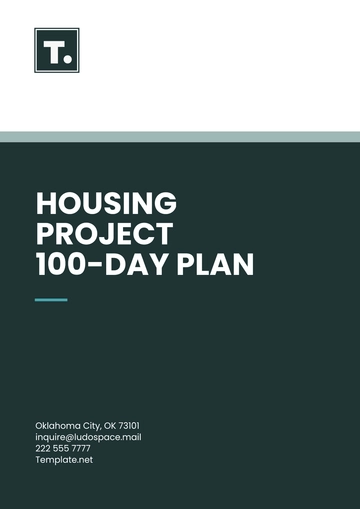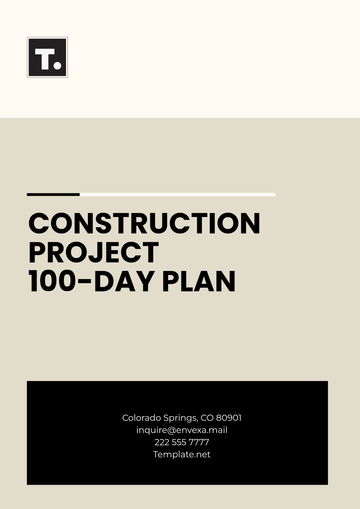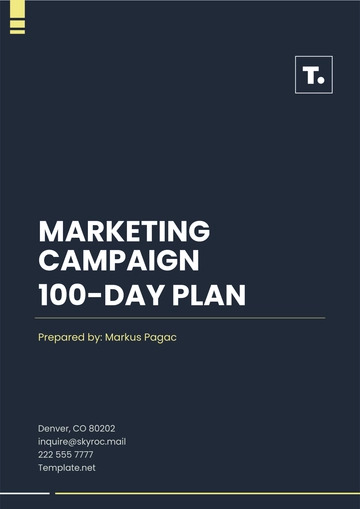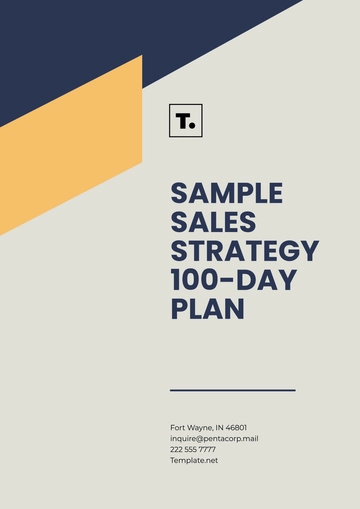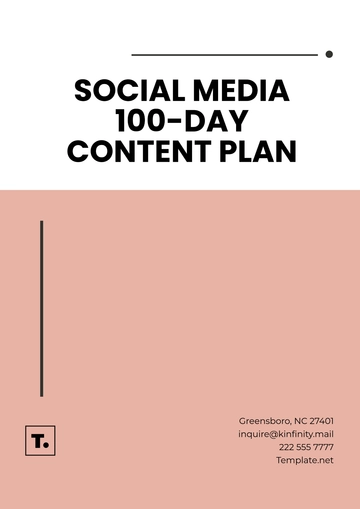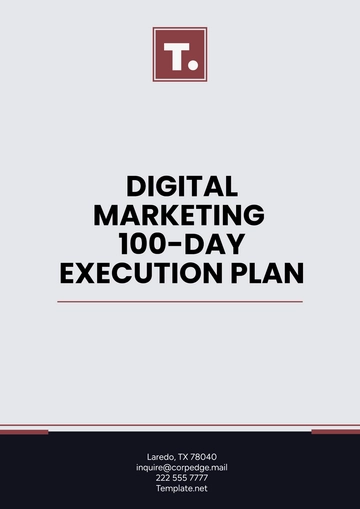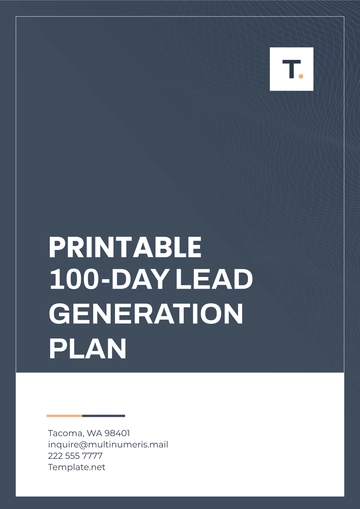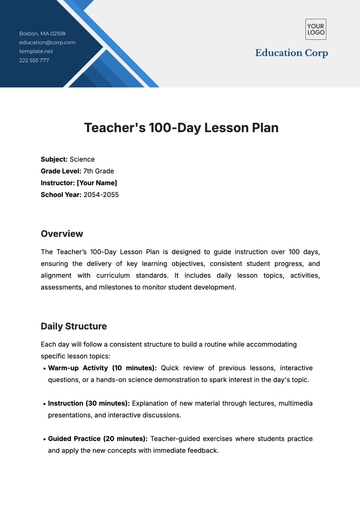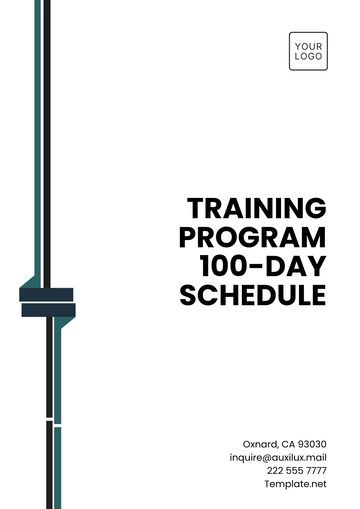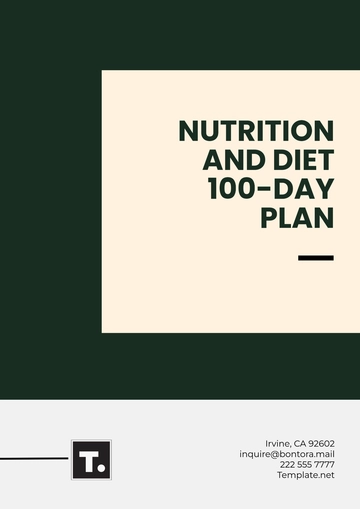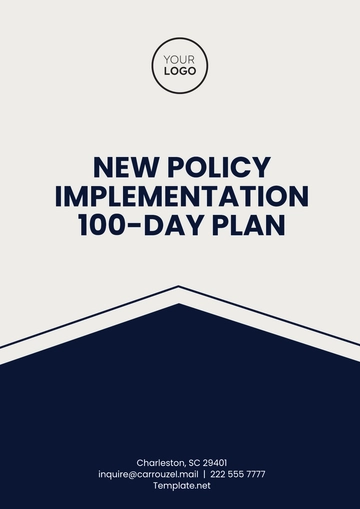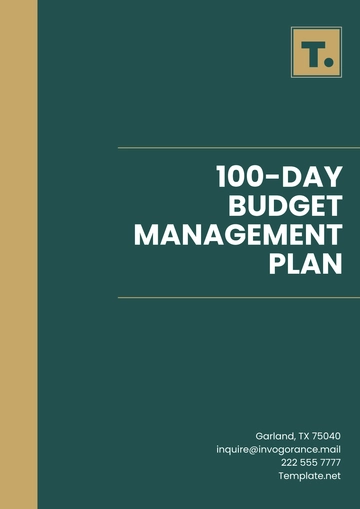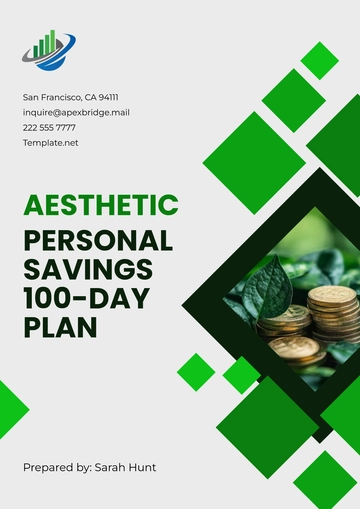Printable 100-Day Lead Generation Plan
Prepared by:
[Your Name]
[Your Company Name]
Objective
To generate high-quality leads and build a sustainable lead pipeline over 100 days through a structured and targeted approach.
Phase 1: Preparation (Days 1-30)
1. Define Your Target Audience
Identify demographics: age, location, interests, industry, etc.
Create buyer personas that represent your ideal leads.
Research competitors and analyze their target audience and strategies.
2. Set SMART Goals for Lead Generation
Specific: What exactly do you want to achieve?
Measurable: How will success be tracked (number of leads, conversion rate)?
Achievable: Set realistic targets considering resources.
Relevant: Ensure goals align with overall business objectives.
Time-bound: Clearly define the 100-day timeline for achieving milestones.
3. Optimize Your Website and Landing Pages
Ensure your website is mobile-friendly and fast.
Create dedicated landing pages with clear calls-to-action (CTAs).
Implement lead capture forms (e.g., newsletter sign-up, contact forms).
4. Develop Lead Magnets
Create downloadable resources such as eBooks, whitepapers, and checklists.
Design webinars or free courses that offer value to your target audience.
Promote these lead magnets on your website and social media.
5. Establish Lead Scoring Criteria
Define what constitutes a qualified lead (e.g., job title, company size, engagement level).
Create a lead scoring system to prioritize high-value prospects.
Phase 2: Execution (Days 31-60)
1. Launch Outreach Campaigns
Email Marketing: Start segmented email campaigns targeting specific buyer personas.
Cold Calling: Develop a script for your sales team to approach potential leads.
Social Media Engagement: Post consistently on platforms like LinkedIn, Facebook, and Twitter to attract attention.
Paid Ads: Run targeted ads on Google, LinkedIn, or Facebook, highlighting your lead magnets and offers.
2. Network and Build Relationships
Industry Forums & Groups: Join relevant online communities and participate in discussions.
Events & Webinars: Host or participate in virtual events to build connections.
Collaborations: Partner with complementary businesses for joint promotions or webinars.
3. Implement Content Marketing Strategy
Blogging: Publish articles that provide solutions to common pain points in your industry.
SEO: Optimize your content to rank higher on search engines for relevant keywords.
Video Content: Create informative videos about your products or services to engage leads.
4. Track & Analyze Performance
Set up analytics tools to monitor your website and campaign performance.
Track open rates, click-through rates (CTR), and conversion rates.
Adjust strategies based on the data gathered for maximum results.
Phase 3: Optimization and Conversion (Days 61-90)
1. Nurture Leads
Send targeted email follow-ups to warm leads with personalized content.
Use automated drip campaigns to keep leads engaged.
Retarget website visitors and ad clickers with tailored messages and offers.
2. Increase Social Proof
Encourage satisfied customers to provide testimonials and reviews.
Share case studies and success stories on your website and social media.
Collaborate with influencers in your industry to increase visibility.
3. Reassess and Refine Lead Scoring
4. Improve Conversion Pathways
Test and refine your landing pages and CTAs.
Use A/B testing for email subject lines, landing page layouts, and ad designs to increase conversions.
Implement an effective follow-up strategy for every lead that shows interest.
Phase 4: Review & Scale (Days 91-100)
1. Review Performance Metrics
Analyze all key performance indicators (KPIs), including the number of leads generated, conversion rates, and cost per lead.
Compare the results with your initial SMART goals and identify areas of improvement.
2. Adjust Strategy Based on Insights
Modify your lead generation tactics based on performance data (e.g., shifting focus from paid ads to content marketing if it performs better).
Refine your messaging and offers to better resonate with your audience.
3. Plan for Scaling
Identify which strategies yielded the best results and scale them.
Expand your outreach efforts to new platforms or additional geographic regions.
Consider outsourcing certain tasks (e.g., content creation, and ad management) to accelerate growth.
4. Set New Lead Generation Goals for the Next Quarter
Based on the results, set more ambitious goals for the next 100 days.
Continue refining your lead generation processes for long-term success.
Summary
This 100-Day Lead Generation Plan is designed to create a consistent flow of leads while ensuring that your marketing and sales teams are aligned and working towards the same objectives. By setting clear goals, executing targeted campaigns, nurturing leads, and refining your processes, you will generate high-quality leads and set the foundation for ongoing business growth.
Plan Templates @ Template.net
